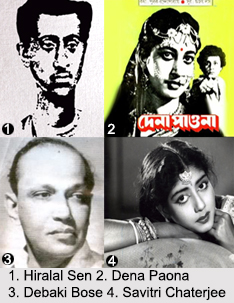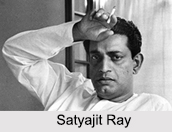 Bengali cinema has its own importance in the Indian film industry. It comprises talented directors, actors, actresses, cameramen, music directors and other technicians. Bengali cinema goes through a lot of experiments before its execution. It is rich with variety of subject matter.
Bengali cinema has its own importance in the Indian film industry. It comprises talented directors, actors, actresses, cameramen, music directors and other technicians. Bengali cinema goes through a lot of experiments before its execution. It is rich with variety of subject matter.History of Bengali Cinema
The history of Bengali cinema dated back to those days when the first bioscope was introduced in Kolkata in 1980. It has come along a long way since its inception. Initially it was stage actors who shouldered the responsibility of establishing the Bengali film industry successfully. It flourished first in Hiralal Sen's silent movie, ‘Billwamangal’ released in 1919 produced by the ‘Madan Theatre Company of Calcutta’. After six years the first Indian feature film ‘Raja Harish Chandra’ was released. The Talkies began in early 1930s. ‘Dena Paona’ is first Bengali cinema as a talkie in 1931.
With the coming of the talkies in the early ‘30s, new studios became prominent in Bengaland most famous being Birendranath Sircar’s ‘New Theatres Ltd.’ which was established in 1930. ‘New Theatres’ landmark films were Debaki Bose’s ‘Chandidas’ (1932), Pramathes Barua’s ‘Debdas’ (1935) and ‘Mukti’ (1937) and Nitin Bose’s ‘President’ (1937). Pankaj Kumar Mallick, music director at New Theatres, first made use of Rabindra Sangeet in Barua’s ‘Mukti’. The studio created singing stars like Umasashi, Kananbala and K.L. Saigal. In the ‘50s, Bengali cinema also produced its most iconic star duo, Uttam Kumar and Suchitra Sen. Uttam Kumar remained Bengali cinema’s top hero for over two decades and his death on 24th July 1980 almost brought the Bengali industry to a standstill. Kanon Devi was considered to be the earliest actress in Bengali cinema. Later on Savitri Chaterjee, Madhavi Mukherjee, Supriya Devi, Sharmila Tagore are note worthy. After them a group of very talented, versatile actresses came and Deboshree Roy topped the list. Indrani Halder, Shatabdi Roy, Rituparna Sengupta did well in contributing much to the Bengali cinema.
 The best-known ‘event’ of the ‘50s Bengali cinema is nonetheless Satyajit Ray’s ‘Pather Panchali’ which released in 1955 and won "Best Human Document" at the 1956 Cannes Film Festival. ‘Pather Panchali’ was appreciated by filmgoers and critics alike, as was ‘Apur Sansar’, the third film of Ray’s ‘Apu trilogy’, which had a ‘silver jubilee’ in Kolkata. ‘Apur Sansar’ introduced Soumitra Chatterjee, who along with Uttam Kumar became Bengali cinema’s top male star, and also worked in Ray’s classics like ‘Charulata’ (1964). Ray worked with Uttam Kumar in ‘Nayak’ (1966), a film supposedly inspired by Uttam’s iconic recognition. ‘Jalsaghar’ (1958), ‘Ajantrik’ (1958), ‘Neel Akasher Neechey’ (1959), ‘Devdas’ (1955), ‘Devi’ (1960), ‘Meghe Dhaka Tara’ (1960), ‘the Calcutta trilogies’ (1971-1976), etc are also note worthy.
The best-known ‘event’ of the ‘50s Bengali cinema is nonetheless Satyajit Ray’s ‘Pather Panchali’ which released in 1955 and won "Best Human Document" at the 1956 Cannes Film Festival. ‘Pather Panchali’ was appreciated by filmgoers and critics alike, as was ‘Apur Sansar’, the third film of Ray’s ‘Apu trilogy’, which had a ‘silver jubilee’ in Kolkata. ‘Apur Sansar’ introduced Soumitra Chatterjee, who along with Uttam Kumar became Bengali cinema’s top male star, and also worked in Ray’s classics like ‘Charulata’ (1964). Ray worked with Uttam Kumar in ‘Nayak’ (1966), a film supposedly inspired by Uttam’s iconic recognition. ‘Jalsaghar’ (1958), ‘Ajantrik’ (1958), ‘Neel Akasher Neechey’ (1959), ‘Devdas’ (1955), ‘Devi’ (1960), ‘Meghe Dhaka Tara’ (1960), ‘the Calcutta trilogies’ (1971-1976), etc are also note worthy.For more visit the page below: